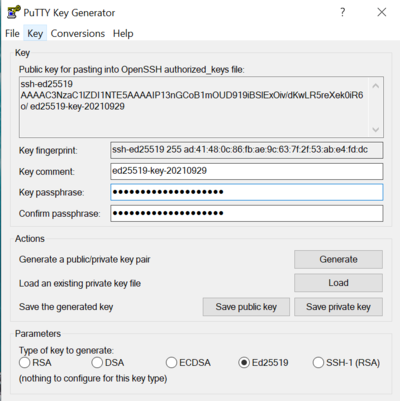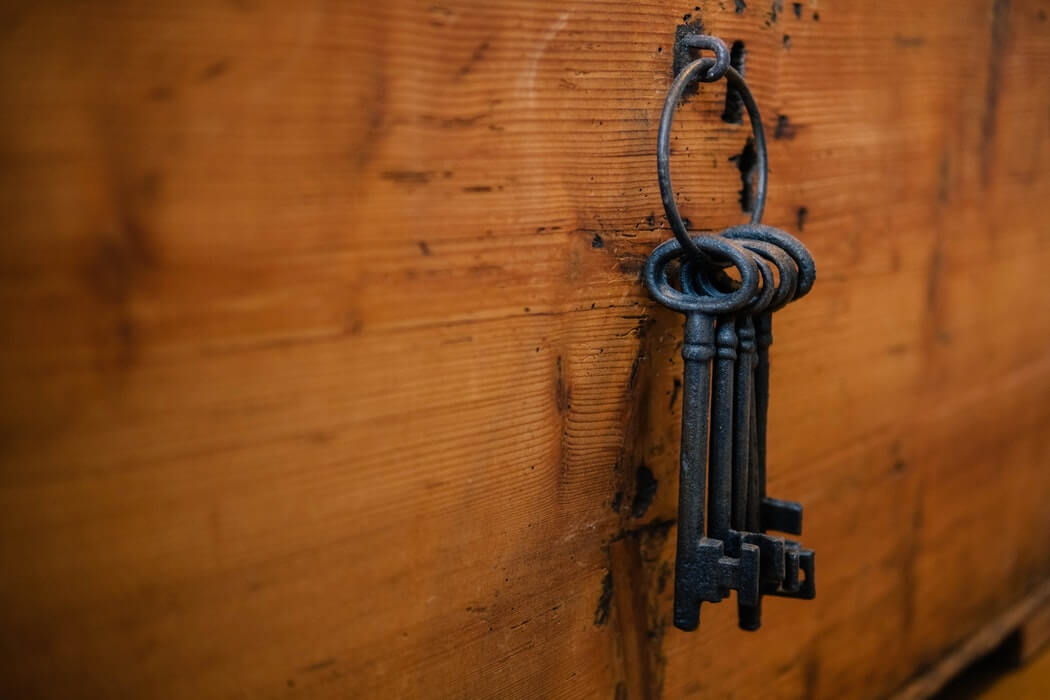Generate New Ssh Key With Same Private Key
SSH allows for both password based authentication, as well as public key authentication. Public key authentication is generally regarded as being more secure, as it isn’t as prone to brute force login attempts (if you disable password based authentication). The private key can also have a passphrase associated with it, which makes public key authentication even more secure if needed.
Sometimes cloud servers will let you put a public key in as a authorized authentication key when the cloud server is created, preventing the need for password based authentication to be enabled by default.
Generate a new SSH public and private key pair:
- Generate New Ssh Key With Same Private Key West
- Generate New Ssh Key With Same Private Key Finder
- Ssh Generate Private Key
“Identifying comment” can be any string that will assist in determining which key this is. “username@hostname” of the machine where you are connecting from would be a good example.
eg:
This will generate two files, “keypair” and “keypair.pub”. “keypair” being the private key that you need to keep secure, and “keypair.pub” being the public key, that can be put on servers that you want to be able to log into with the private key.
Change the filename to suit your needs. This example uses “keypair” for the examples.
The contents of the public key file “keypair.pub” can be inserted into the ~/.ssh/authorized_keys file on the machine that you want to be able to connect into remotely. This must be done for the specific user.
Insert public key into authorized keys
View the contents of the public key file:
eg:
Your ssh client begins the authentication by sending the public key (the signature referenced in bold above) to the server. The server, if the public key is an authorized key, sends a random session ID back to your client. Your client then encodes that session ID with the private key. If you want to name your new key pair exactly the same as the lost private key, you must first delete the existing key pair. For information about creating a new key pair, see Creating a key pair using Amazon EC2 or Importing your own public key to Amazon EC2. SSH key pair's are machine independent, which means you can create a SSH key pair on one machine and can deploy the same SSH key pair on multiple machines. It is valid thing to do, thats how you must do it. Moreover Git uses SSH for transport, so you can clone/download the Git on both the machines having the same SSH key pair. Adding your SSH key to the ssh-agent. Before adding a new SSH key to the ssh-agent to manage your keys, you should have checked for existing SSH keys and generated a new SSH key. When adding your SSH key to the agent, use the default macOS ssh-add command, and not an application installed by macports, homebrew, or some other external source.
Take note of the output, and copy it into the clipboard if possible, or use some other method to get this file/data onto the remote machine, as it will be used in the next step.
On the remote server you want to be able to log into: /mafia-2-pc-cd-key-generator-free-download.html.
If you have chosen to copy the public key file to the remote host instead, you can issue the following command instead:
Coot mac 10.10 download. Logging into remote ssh server using the private key file
To connect to the remote host using SSH you can use the following command:
Windows xp oem key generator. This will use the private key called “keypair” created earlier, and assuming the remote server has the public key added to the “user” users authorized_keys file, you should be able to log into the remote system.
Overview Public key authentication is a way of logging into an SSH/SFTP account using a cryptographic key rather than a password. If you use very strong SSH/SFTP passwords, your accounts are already safe from brute force attacks.

Generate New Ssh Key With Same Private Key West
Installing NGINX, PHP, and MySQL on Ubuntu 13.04
May 5, 2013Generate New Ssh Key With Same Private Key Finder
Flush the Postfix mail queue to force retry
April 5, 2012